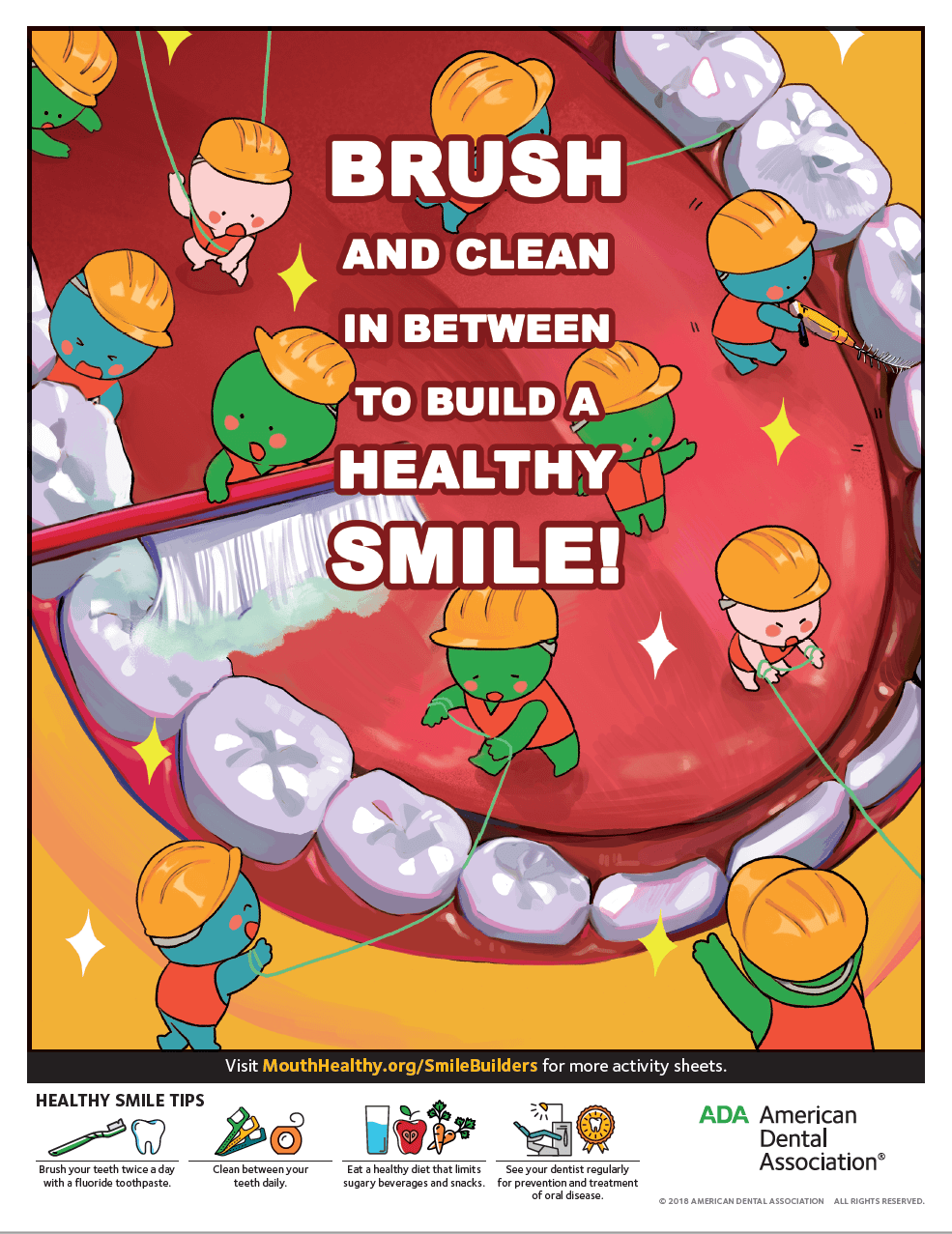February is National Children’s Dental Health Month. To celebrate the American Dental Association is encouraging good brushing habits activity and coloring pages, including a downloadable Brushing Calendar to help your little ones track the good habits they are developing.
We talk about it every year, but lifelong habits start early. The following guidelines can help parents make sure kids’ brushing habits are on track:
Babies – Under 1 Year
Babies don’t usually get their first teeth until around eight months, but they still need a clean mouth! Gently cleaning gums with a soft cloth, gauze, or a super-soft fingertip baby toothbrush can help remove food particles. But don’t press too hard – a very light pressure will keep from irritating sensitive gums.
Toddlers – 1 to 2 Years
When baby’s first tooth erupts, it’s time to begin to use a toddler-sized toothbrush for cleaning their mouth. Look for a brush that has very soft, rounded bristles that easily fits in their little mouth. As soon as they have more than one tooth and the teeth edges touch, you can begin using wide, flat floss. Again, make sure to only apply gentle pressure while cleaning all sides of the tooth. Making oral hygiene part of their regular bedtime routine is the first step in a lifetime’s good habits.
Preschoolers – 2 to 4 years
As their independence, mobility, and language begin to develop, so will their teeth. They’ll already be familiar with brushing and flossing, and the next step is brushing for themselves. You should tart by empowering them them to choose their own toothbrush. Making a big decision for themselves will excite them, and they’ll have their pick from a huge array of cartoon characters, TV show themes, and movie heroes. You will, however, need to make sure they’re choosing one that fits easily in their mouth and has soft bristles to protect their gums. Since they lack hand dexterity at this age, their toothbrushes are shorter and equipped with larger handles. You should still be supervising their brushing at this stage.
School-aged Children – 5 to 8 years
At this age, a good brushing routine and technique should be established. They’ll need to upgrade to a longer-necked brush with a larger head that still fits comfortably in their mouth while brushing. And they’ll still be choosing a style with bright colors and familiar characters. At this stage they can begin flossing on their own, but again with supervision. By the time they’re in 2ndor 3rdgrade, they should be able to brush and floss independently.
Beyond basic hygiene, dentist visits are something that should also begin at a young age. If your baby has older siblings, it’s a perfect time to get them used to the idea of visiting Meyer & Johns twice a year. We can do a pretend “Mouth Check” of toddlers, even if they don’t have enough teeth to clean! If haven’t already introduced your child to our friendly office staff, bring them to your next appointment.




